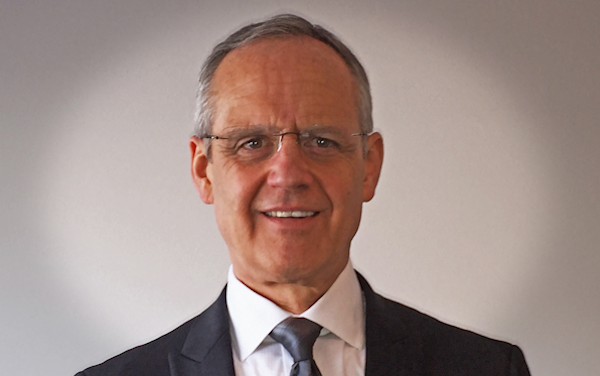Rev. John Hice’s ministry has stretched across Michigan. He reflects.
JOHN E. HARNISH
Michigan Area Communications
Joni Mitchell’s melancholy song says, “I’ve looked at life from both sides now…” As we anticipate the coming together of the West Michigan and Detroit Conferences, there are relatively few people who can look at life from both sides of the state of Michigan. Rev. John Hice is one person with that unique perspective.
John has served as a pastor and District Superintendent “on both sides”. He grew up in Dearborn, then served in the West Michigan Conference for 20 years before returning to the Detroit Conference as the pastor at Northville and Royal Oak. While in West Michigan he was the District Superintendent of the Grand Rapids District and now he serves as the Superintendent of the Crossroads District in the Detroit Conference. In addition, John says he served “…not just in two different conferences, but two different eras in the life of the church.”
On both sides John has seen the state of the church change significantly because of changes in the culture and the decline of many of our congregations. While some churches which were struggling 20 years ago have lost strength or closed, others “…are engaging in prayerful and courageous courses of change, adapting to a changing world, and they have grown and become stronger.” Conference programs which worked two decades ago now seem out of date and on both sides we face a new day with shared challenges, all of which play into the conversation about the future of the church and what it means to “create a new conference.”.
When asked about the differences between the West Michigan and Detroit conferences, John says, “I may be a lone voice, but I am not sure there are as many differences as we thought.” He feels the difference might be more between town and country churches vis-a-vis suburban and urban churches, rather than east and west of an imaginary line through the middle of the lower peninsula. He acknowledges there are significantly different views of metropolitan Detroit in the Marquette, Grand Traverse, and Saginaw districts than those churches in the Southeast portion of the state. In his district, he celebrates the support for the city of Flint during the water crisis, but he also recognizes that for some rural communities there are misgivings about the amount of attention and resources directed to Flint, Detroit and our other urban centers. Sometimes it is our assumptions rather than the reality that get in the way. When folks in Detroit assume that all of Grand Rapids is Dutch Calvinist, or when west siders perpetuate negative attitudes and prejudices toward Detroit, our assumptions get in the way of truly coming together.
But on the positive side, John says “the more we live together, the more we realize the similarities and the shared values which run deeper than our differences. For example, both conferences have a high commitment to mission support through apportionment giving, Advance Specials and local mission teams serving at home and around the world. John believes Michigan United Methodists offer an example of the balance of Wesleyan theology—personal holiness coupled with social holiness—which could be a model for the rest of the church. He believes there is a balance between deep spirituality and prayer on one hand and social engagement on the other, representing a desire to “…transform the world through hand and heart.”
Given his experience on both sides, John has experienced the differences in structure and policies, places where he says we can learn from each other and seek new directions. The differences in health care for clergy, appointive practices by the Bishop and cabinet, the ways in which business is conducted in the annual conference session, and the systems for providing missional church support in the districts offer opportunities to discern the best practices and develop new ways of doing our work as a church. For example, the cabinet has developed a “Forms Ministry Team” to look at all the forms the local church provides for Church Conference, asking “Why?” and “What is the best approach?”
When asked about the proposal for nine districts, John said, “It may or may not be financially beneficial. End of the day there may be some cost savings, but more important is the shift to encourage the superintendents to be the “Chief Missional Strategist” for the district in order to create more collaboration between the churches.” He says the sheer size of the districts will be “…challenging, but it should be empowering as well.”
Finally, John said, “I celebrate the spirit, commitment and faith of United Methodists across the state, north and south, east and west, to work together to “make disciples of Jesus Christ for the transformation of the world.” Having looked at life from both sides, John is encouraged about the future of the church as we move into this new venture together.
~John E. Harnish is a retired clergy member of the Detroit Conference now serving as the Interim Pastor at the Church of the Dunes in the West Michigan Conference.
Last Updated on May 16, 2017

